Reminiscing

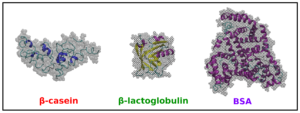 My niece, Ashley Parmely has had a very busy year. Most of Ashley’s years are quite busy, so to say she has had a very busy year, is really saying something. Ashley and my nephew, Eric Parmely own a farm west of Casper, where they raise cows, chickens, turkeys, goats, pigs, horses, cats, dogs, and their four kids (three daughters and a son). Ashley is really into healthy living and raises only A2 milk cows. I didn’t know what A2 milk cows were, so I did some checking. A2 milk is a variety of cows’ milk that mostly lacks a form of B-Casein proteins called A1, and instead has mostly the A2 form. The a2 Milk Company Limited (previously known as A2 Corporation) is a dual listed NZX and ASX 50 public listed company that commercializes intellectual property relating to A1 protein-free milk that is sold under the a2 and a2 Milk brands, as well as the milk and related products such as infant formula. B-Casein is a major milk protein, representing 30% of the total protein found in cow milk. It is a member of the casein family of related phosphoproteins, which are commonly found in mammalian milk. B-Casein from bovine milk is an immunoglobulin E (IgE)-binding epitope belonging to the secretory calcium-binding phosphoprotein family. It consists of 209 amino acids and five phosphate groups. The a2 Milk Company and some companies producing
My niece, Ashley Parmely has had a very busy year. Most of Ashley’s years are quite busy, so to say she has had a very busy year, is really saying something. Ashley and my nephew, Eric Parmely own a farm west of Casper, where they raise cows, chickens, turkeys, goats, pigs, horses, cats, dogs, and their four kids (three daughters and a son). Ashley is really into healthy living and raises only A2 milk cows. I didn’t know what A2 milk cows were, so I did some checking. A2 milk is a variety of cows’ milk that mostly lacks a form of B-Casein proteins called A1, and instead has mostly the A2 form. The a2 Milk Company Limited (previously known as A2 Corporation) is a dual listed NZX and ASX 50 public listed company that commercializes intellectual property relating to A1 protein-free milk that is sold under the a2 and a2 Milk brands, as well as the milk and related products such as infant formula. B-Casein is a major milk protein, representing 30% of the total protein found in cow milk. It is a member of the casein family of related phosphoproteins, which are commonly found in mammalian milk. B-Casein from bovine milk is an immunoglobulin E (IgE)-binding epitope belonging to the secretory calcium-binding phosphoprotein family. It consists of 209 amino acids and five phosphate groups. The a2 Milk Company and some companies producing  goats’ milk products claim that milk containing A1 proteins is harmful, but there has been no widely accepted scientific work identifying a direct link between A1 protein and any adverse effect on health. Time will tell, as testing continues, but Ashley tends to agree with the current test results. If you’re like me, you probably don’t understand most of what I just said. Suffice it to say that not everything in our food is necessarily good for us. Ashley now has 2 new A2 milk cows that were both going to calf around the same time, and they birthed a day or two apart. She has been milking and feeding since that time.
goats’ milk products claim that milk containing A1 proteins is harmful, but there has been no widely accepted scientific work identifying a direct link between A1 protein and any adverse effect on health. Time will tell, as testing continues, but Ashley tends to agree with the current test results. If you’re like me, you probably don’t understand most of what I just said. Suffice it to say that not everything in our food is necessarily good for us. Ashley now has 2 new A2 milk cows that were both going to calf around the same time, and they birthed a day or two apart. She has been milking and feeding since that time.
Ashley has also started making Ghee. Ghee is a type of clarified butter, originating from the Indian subcontinent. Ghee is typically prepared by simmering butter, which is churned from cream, skimming any impurities from the surface, then pouring and retaining the clear liquid fat while discarding the solid residue that has settled to the bottom. Spices can be added for flavor. The texture, color, and taste of ghee depend on the quality of the butter, the milk used in the process, and the duration of boiling time. Personally, I am not a fan of Ghee, but many people really like it. I guess I’m just a Butter Girl. My sister-in-law, Jennifer Parmely, who is Ashley’s mother-in-law, really likes Ghee and is quite excited about the Ghee making process. She is quite proud of Ashley’s Ghee. Maybe it depends on the person making it or the spices they use. The one I “tasted” was tasteless, so my opinion could be clouded. I might have to try Ashley’s Ghee sometime.
As I said, Ashley and Eric have four kids, and the kids keep her very busy. The oldest two (daughters) are in gymnastics, while their son and youngest daughter are playing Hockey. Her youngest daughter is in pre-school, and Ashley homeschools the older three children. The busy day starts with getting her daughter to pre-school, and later she must go pick her up too. Then, the older kids have homeschooling and field trips as well. All that m
 eans that Ashley is constantly on the run. Summer was busy helping their oldest daughter with 4H projects. Last winter found the family snowed in several times. While being snowed in cramped Ashley’s busy lifestyle, she is always a good sport about it and took it all in stride. Nevertheless, I’m sure she is hoping that this winter will not be a repeat of last year’s harshness. Today is Ashley’s birthday. Happy birthday Ashley!! Have a great day!! We love you!!
eans that Ashley is constantly on the run. Summer was busy helping their oldest daughter with 4H projects. Last winter found the family snowed in several times. While being snowed in cramped Ashley’s busy lifestyle, she is always a good sport about it and took it all in stride. Nevertheless, I’m sure she is hoping that this winter will not be a repeat of last year’s harshness. Today is Ashley’s birthday. Happy birthday Ashley!! Have a great day!! We love you!!
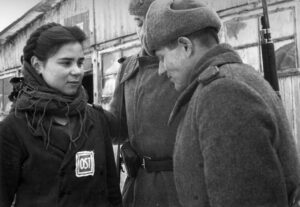 When the Germans surrendered at the end of World War II, Germany was divided into four areas of control by the Allied Powers…Great Britain in the northwest, France in the southwest, the United States in the south, and the Soviet Union in the east. Berlin, the capital city situated in Soviet territory, was also divided into four occupied zones. That gave those four countries governing control over their own sections of Germany, and the people in those areas. Not every country was exactly planning to do what the people might consider to be their best interests. The Allied countries had the control and the ability to dish out punishment as they saw fit. The Soviet Union considered the forced labor of Germans as part of German war reparations for the damage inflicted by Nazi Germany on the Soviet Union during the Axis-Soviet campaigns (1941-1945) of World War II. They wanted to exact some measure of revenge, I guess, and they were in a position to make that happen.
When the Germans surrendered at the end of World War II, Germany was divided into four areas of control by the Allied Powers…Great Britain in the northwest, France in the southwest, the United States in the south, and the Soviet Union in the east. Berlin, the capital city situated in Soviet territory, was also divided into four occupied zones. That gave those four countries governing control over their own sections of Germany, and the people in those areas. Not every country was exactly planning to do what the people might consider to be their best interests. The Allied countries had the control and the ability to dish out punishment as they saw fit. The Soviet Union considered the forced labor of Germans as part of German war reparations for the damage inflicted by Nazi Germany on the Soviet Union during the Axis-Soviet campaigns (1941-1945) of World War II. They wanted to exact some measure of revenge, I guess, and they were in a position to make that happen.
So, the Soviet authorities deported German civilians from Germany and Eastern Europe to the USSR after World 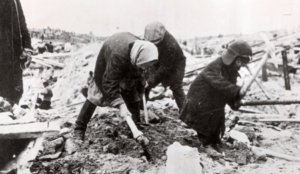 War II as forced laborers. It almost reminds me of what happened with the Holocaust, except that the Soviet Union had no interest in killing their captives. They wanted slave labor and a measure of retaliation. Ethnic Germans living in the USSR were conscripted for forced labor. German prisoners of war were also used as a source of forced labor during and after the war by the Soviet Union and by the Western Allies.
War II as forced laborers. It almost reminds me of what happened with the Holocaust, except that the Soviet Union had no interest in killing their captives. They wanted slave labor and a measure of retaliation. Ethnic Germans living in the USSR were conscripted for forced labor. German prisoners of war were also used as a source of forced labor during and after the war by the Soviet Union and by the Western Allies.
The decision was made and the fate of the German people was sealed. In 1946, the Soviet Union forcibly relocated more than 2,500 former Nazi German specialists, including scientists, engineers, and technicians who worked in specialist areas, from companies and institutions relevant to military and economic policy in the Soviet occupation zone of Germany (SBZ) and Berlin, along with around 4,000 family members, totaling more than 6,000 people, to the Soviet Union as war reparations. These specialists with all of their knowledge and abilities, could easily change the course of history in the Soviet Union, or any country they were placed in, for that matter. Still, not all of the forced labor were specialists. Many were unskilled labor, doing menial jobs.
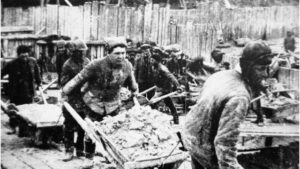
The good thing was that the situation in Germany after World War II was appalling. Many of the people were homeless from the bombings. I suppose that, for that reason, the forced move, while scary, was not the worst thing in the world. It was possible that a new life in the Soviet Union could be favorable when compared to war-torn Germany. It is unclear whether any Germans who were sent to the Soviet Union chose to go back to Germany, because information about forced labor of Germans in the Soviet Union was suppressed in the Eastern Bloc until after the dissolution of the Soviet Union in 1991. Many of those records could have also been destroyed.
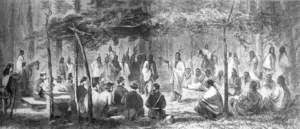 Actually, The Medicine Lodge Treaty is the name given for three treaties that were signed near Medicine Lodge, Kansas, between the Federal government of the United States and southern Plains Indian tribes on October 21, 1867. The treaties were intended to bring peace to the area by relocating the Native Americans to reservations in Indian Territory and away from European-American settlement. The Indian Peace Commission had concluded in its final report in 1868, that the wars were completely preventable. The commission determined that the United States government and its representatives, including the United States Congress, had contributed to the warfare on the Great Plains by failing to fulfill their legal obligations and to treat the Native Americans with honesty. This fact is not a new concept for anyone who has studied history at all.
Actually, The Medicine Lodge Treaty is the name given for three treaties that were signed near Medicine Lodge, Kansas, between the Federal government of the United States and southern Plains Indian tribes on October 21, 1867. The treaties were intended to bring peace to the area by relocating the Native Americans to reservations in Indian Territory and away from European-American settlement. The Indian Peace Commission had concluded in its final report in 1868, that the wars were completely preventable. The commission determined that the United States government and its representatives, including the United States Congress, had contributed to the warfare on the Great Plains by failing to fulfill their legal obligations and to treat the Native Americans with honesty. This fact is not a new concept for anyone who has studied history at all.
At the request of the tribal chiefs, the US government met the chiefs at a place traditional for Native American ceremonies. The first treaty was signed October 21, 1867, with the Kiowa and Comanche tribes. The second, with the Kiowa-Apache, was signed the same day. The third treaty was signed with the Southern Cheyenne and Arapaho on October 28, 1867. 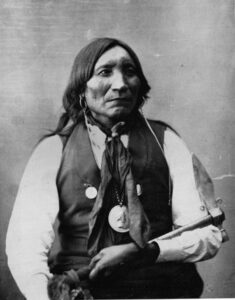
As expected, the Medicine Lodge Treaty, heavily favored the Congress and the white settlers. The tribes were assigned reservations of diminished size compared to the territories that had been defined in an 1865 treaty. The treaty tribes never actually ratified the treaty by vote of adult males…a requirement of the tribes. The Congress also changed the allotment policy under the Dawes Act and authorized sales under the Agreement with the Cheyenne and Arapaho (1890) and the Agreement with the Comanche, Kiowa and Apache (1892). With the agreement, signed with the Cherokee Commission, the Congress further reduced the reservation territory promised to the Indians. Lone Wolf, the Kiowa chief, immediately filed a lawsuit against the government for fraud on behalf of the tribes in Lone Wolf v. Hitchcock. The US Supreme Court ruled against the tribes in 1903, after determining that the Congress had “plenary power” and the political right to make such decisions. With the power of that decision to back them, Congress wasted no time in unilaterally acting in the same manner on land decisions related to other reservations as well.
Because of the outstanding issues with the treaty and subsequent government actions, in the mid-20th century, the Kiowa, Arapaho and Comanche filed several suits for claims against the US government. Over decades, they won substantial settlements of monetary compensation in the amount of tens of millions of dollars, although it 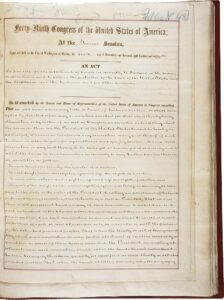
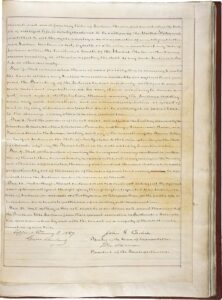 took years for the cases to be resolved.
took years for the cases to be resolved.
I don’t know what could have been done differently, exactly, other than to be completely fair with our treatment of the Indians. I have never liked the idea of forcing them to be on the reservations. The land they were given was far less than they should have received, and instead of letting them become members of society, where they could make an honest living, they were given compensation without the need to earn in, creating a group of people who could make no contribution to society at all. It basically took away their self-respect and their sense of worth…a situation which helped no one. The fighting continued until the last battle was fought on January 9, 1918.
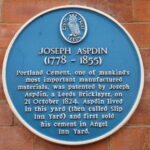 People in our modern-day world truly take some of history’s inventions for granted. Things that have been around for a long time, are especially susceptible. Around 3000 BC, the Egyptians used early concrete forms as mortar in their construction work. The Great Pyramids at Giza were built from an early form of concrete, and they are still standing today. It seems strange to think of concrete existing way back then, but it actually did. It might not have been in exactly the same form as the concrete of today. In fact, the Bible tells of using clay and straw to make bricks and mortar. It seems rather archaic to us these days, and but then it seems to have lasted a whole lot longer than some of the concrete of today, so maybe some of it was better.
People in our modern-day world truly take some of history’s inventions for granted. Things that have been around for a long time, are especially susceptible. Around 3000 BC, the Egyptians used early concrete forms as mortar in their construction work. The Great Pyramids at Giza were built from an early form of concrete, and they are still standing today. It seems strange to think of concrete existing way back then, but it actually did. It might not have been in exactly the same form as the concrete of today. In fact, the Bible tells of using clay and straw to make bricks and mortar. It seems rather archaic to us these days, and but then it seems to have lasted a whole lot longer than some of the concrete of today, so maybe some of it was better.
Portland cement was invented by Joseph Aspdin of England in 1824. The first concrete  paved street in the United States was laid in Bellefontaine, Ohio in 1891. The street was paved by George W Bartholomew, who owned the Buckeye Portland Cement Company and convinced city officials to let him pave an eight-foot-wide strip of Main Street with a mixture of sand, stone, and cement. Two years later, city officials agreed to let Bartholomew pave an entire block of Court Avenue between Main Street and Opera Street, which today remains the oldest concrete street in America, and it still exists, unlike some of the products currently used for streets today.
paved street in the United States was laid in Bellefontaine, Ohio in 1891. The street was paved by George W Bartholomew, who owned the Buckeye Portland Cement Company and convinced city officials to let him pave an eight-foot-wide strip of Main Street with a mixture of sand, stone, and cement. Two years later, city officials agreed to let Bartholomew pave an entire block of Court Avenue between Main Street and Opera Street, which today remains the oldest concrete street in America, and it still exists, unlike some of the products currently used for streets today.
Steel-reinforced concrete was developed by the end of the 19th century. August Perret designed and built an apartment building in Paris using steel-reinforced concrete in 1902. The building was widely admired, and with that building came a new popularity for concrete. In fact, the building influenced further development of reinforced concrete. Eugène Freyssinet really pioneered reinforced-concrete construction by building two colossal parabolic-arched airship hangars at Orly Airport in Paris in 1921.
Concrete has undergone several changes since 1921. During the 21st century, concrete manufacturers have 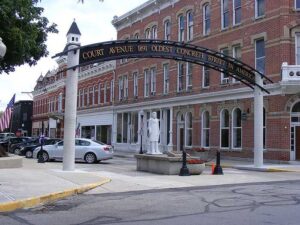 sstarted changing many of their product formulas in ways that increase early strength and lessen later age trength. This threw me a little bit, but the primary reason for this shift is said to be practical…”On a construction site, you can remove the forms from new concrete much faster if it has high early strength 1. Additionally, according to AZoBuild.com, concrete has gone through numerous changes over the last few decades despite its appearance looking almost the same. These changes include the development of environmentally friendly concrete products.” I’m not sure these changes are all that good, because they seem to cause more cracking and an earlier breakdown of the concrete. I’m not a contractor, but that doesn’t seem like a good thing to me.
sstarted changing many of their product formulas in ways that increase early strength and lessen later age trength. This threw me a little bit, but the primary reason for this shift is said to be practical…”On a construction site, you can remove the forms from new concrete much faster if it has high early strength 1. Additionally, according to AZoBuild.com, concrete has gone through numerous changes over the last few decades despite its appearance looking almost the same. These changes include the development of environmentally friendly concrete products.” I’m not sure these changes are all that good, because they seem to cause more cracking and an earlier breakdown of the concrete. I’m not a contractor, but that doesn’t seem like a good thing to me.
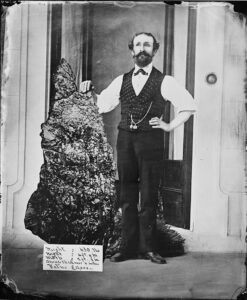 Bernhardt Otto Holtermann, who was born on April 29, 1838, was a prospector who owned part of an Australian claim where rich veins of gold were discovered after years of dry digging. I suppose it does take perseverance to successfully mine for gold, but when you consider that Holtermann finally discovered gold afteryears of digging, I would say that mining for gold also takes faith. Holtermann was born in Germany, and at adulthood set sail for Sydney, Australia in order to avoid military service. Most of his mining years were unsuccessful, including the year he even blew himself up with a premature explosion of blasting powder. Of course, his accidental explosion did not kill him, and must not have been very strong, because at the time of his greatest find, he still had all his limbs.
Bernhardt Otto Holtermann, who was born on April 29, 1838, was a prospector who owned part of an Australian claim where rich veins of gold were discovered after years of dry digging. I suppose it does take perseverance to successfully mine for gold, but when you consider that Holtermann finally discovered gold afteryears of digging, I would say that mining for gold also takes faith. Holtermann was born in Germany, and at adulthood set sail for Sydney, Australia in order to avoid military service. Most of his mining years were unsuccessful, including the year he even blew himself up with a premature explosion of blasting powder. Of course, his accidental explosion did not kill him, and must not have been very strong, because at the time of his greatest find, he still had all his limbs.
Holtermann’s “claim to fame” gold nugget was the largest gold specimen ever found, 59 inches long, weighing 630 pounds, and with an estimated gold content of 3,000 troy ounces. It was found at Hill End, near Bathurst, New South Wales. The nugget brought him enough wealth to build a mansion in North Sydney. Today, the mansion is one of the boarding houses at Sydney Church of England Grammar School (known as the Shore school). While working with one of his partners and later brother-in-law, Ludwig Hugo ‘Louis’ Beyers in their Star of Hope Gold Mining Company, in which he and Beyers were among the partners, they struck it rich. On February 22, 1868, Holtermann married Harriett Emmett, while Beyers married her sister Mary. On October 19, 1872, the Holtermann Nugget was discovered. While it was not “strictly speaking” a nugget, it was a gold specimen, a mass of gold embedded in rock, in this case quartz. Holtermann attempted to buy the 3,000-troy-ounce specimen from the company, offering £1000 over its estimated value of £12,000 (about AU$1.9 million in 2016 currency, AU$4.8 million on the 2017 gold price), 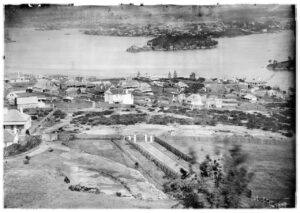 but was turned down, and the nugget was sent away to have the gold extracted. Holtermann was so upset about that, that resigned from the company in February 1873.
but was turned down, and the nugget was sent away to have the gold extracted. Holtermann was so upset about that, that resigned from the company in February 1873.
Holtermann did manage to get a photograph of himself with the nugget. This famous photo of Holtermann next to a giant “nugget” was taken by an unknown photographer. After leaving the Star of Hope Gold Mining Company, Holtermann was elected as a member for Saint Leonard’s parliament in 1882. Tragically, at the young age of just 47 years, Holtermann died in Sydney, Australia on his birthday, April 29, 1885, of “cancer of the stomach, cirrhosis of the liver, and dropsy.” He left behind his wife, three sons, and two daughters.
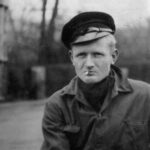 Bent Faurschou Hviid, who was born January 7, 1921, later became a member of the Danish resistance group Holger Danske during World War II. Because of his red hair, Hviid was nicknamed “Flammen,” which means “The Flame.” In 1951, he and his Resistance partner Jørgen Haagen Schmith, were posthumously awarded the United States Medal of Freedom by President Harry Truman. The Presidential Medal of Freedom is the highest civilian award of the United States, alongside the Congressional Gold Medal. The award is not limited to US citizens and, while it is a civilian award, it can also be awarded to military personnel and worn on the uniform.
Bent Faurschou Hviid, who was born January 7, 1921, later became a member of the Danish resistance group Holger Danske during World War II. Because of his red hair, Hviid was nicknamed “Flammen,” which means “The Flame.” In 1951, he and his Resistance partner Jørgen Haagen Schmith, were posthumously awarded the United States Medal of Freedom by President Harry Truman. The Presidential Medal of Freedom is the highest civilian award of the United States, alongside the Congressional Gold Medal. The award is not limited to US citizens and, while it is a civilian award, it can also be awarded to military personnel and worn on the uniform.
If you were to ask the men who were a part of the Holger Danske, they would tell you that no other resistance member was as hated or sought after by the Germans as was Hviid. Leader of the Holger Danske from 1943 through 1945, Gunnar Dyrberg said in the 2003 Danish documentary film, “With a Right to Kill,” that no one knows exactly how many executions “The Flame” performed, but he was rumored to have killed 22 persons. In all, it is said that the Holger Danske carried out an estimated 400 executions…performed by the Resistance agents, but apparently no one man executed more than Hviid.
Hviid grew up during World War I and was 20 when the Germans occupied Denmark. He was not about to just sit back and let the Nazis take over his country…at least, not without a fight. He entered the Holger Danske resistance group in Copenhagen. He was assigned to kill Danish Nazi officials and collaborators…traitors, who in Hviid’s opinion, did not deserve to live.
“Flammen” often partnered with “Citronen” whose real name was Jørgen Haagen Schmith. “Citronen” means “the lemon.” Schmith got this nickname because he sabotaged a Citroën garage, destroying six German cars and a tank. Citronen usually drove for Flammen, who executed their given targets. The two men were the most famous resistance duo in Denmark during World War II. While they often worked together, the Germans put the highest bounty on Flammen’s head that they offered for any Resistance fighter, due to the Faurschou of Germans who were executed by Flammen.
On October 18, 1944, while Hviid was having dinner with his landlady and some other guests, someone knocked at the door. When the door was opened, a German officer demanded entry. Hviid, who was unarmed  that evening, quickly went upstairs seeking to escape across the roof. When he reached the roof, he saw that the house was surrounded. Refusing to be taken alive, Hviid chewed a cyanide capsule and was dead a few seconds later.
that evening, quickly went upstairs seeking to escape across the roof. When he reached the roof, he saw that the house was surrounded. Refusing to be taken alive, Hviid chewed a cyanide capsule and was dead a few seconds later.
The witnesses later told of how they could hear the German soldiers upstairs cheering at the sight of the corpse. For the Germans, the form of death that took “The Flammen” out made no difference to the German soldiers. All that mattered was that he was dead. The soldiers dragged Hviid downstairs feet first, repeatedly causing his head to bang against the stairs as they went. I suppose it was a show of disrespect or perhaps, triumph for them, although they did not cause his death really.
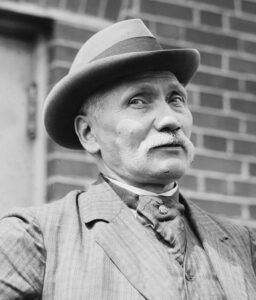
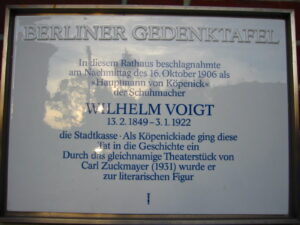 Sometimes, you come across someone so bold and so outrageous in their actions, that you are left in complete shock. Now, I can’t say that I am the one in complete shock, but I suspect that a squad of German soldiers might have been, when on October 17, 1906, Wilhelm Voigt, a 57-year-old German shoemaker, decided to impersonate an army officer and lead an entire squad of soldiers to help him steal 4,000 marks. When calculated to American dollars and to 2023, that would be approximately $33,000. While Voigt was a shoemaker by trade, he also had a long criminal record as a thief. So, he carefully planned the robbery, knowing that the German soldiers had a long history of blind obedience.
Sometimes, you come across someone so bold and so outrageous in their actions, that you are left in complete shock. Now, I can’t say that I am the one in complete shock, but I suspect that a squad of German soldiers might have been, when on October 17, 1906, Wilhelm Voigt, a 57-year-old German shoemaker, decided to impersonate an army officer and lead an entire squad of soldiers to help him steal 4,000 marks. When calculated to American dollars and to 2023, that would be approximately $33,000. While Voigt was a shoemaker by trade, he also had a long criminal record as a thief. So, he carefully planned the robbery, knowing that the German soldiers had a long history of blind obedience.
Voigt got his hands on a captain’s uniform and hatched a plan to manipulate the German army into following his lead, thereby exploiting their blind obedience to authority and making them assist in his crazy robbery scheme. Voigt approached a troop of soldiers in Tegel, Germany. Just outside Berlin, he boldly ordered the unit to follow him 20 miles into the town of Kopenik. The group had lunch, and then Voigt put the men in position and stormed into the mayor’s office. They proceeded to arrest the mayor. He demanded to see the cash box and 
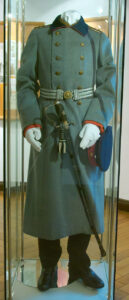 confiscated the 4,000 marks inside. The mayor was put in a car, and Voigt ordered that he be delivered to the police in Berlin. Just like that, the mayor was under arrest…by an imposter.
confiscated the 4,000 marks inside. The mayor was put in a car, and Voigt ordered that he be delivered to the police in Berlin. Just like that, the mayor was under arrest…by an imposter.
And the misfit squad of soldiers proceeded to Berlin, Voigt managed to disappear with the money. No one noticed that he had gone, and it took more than a few hours at the police station before everyone realized that it was all a hoax. As for the Kaiser…well, he thought the story was funny, but They had been humiliated by the man who was obviously impersonating a captain. They launched a massive campaign to find Voigt. They wanted revenge for the fact that they were fooled. Voigt was caught in Berlin a few days later. Voigt was found guilty and was sentenced to four years for the robbery. Somehow, the Kaiser himself pulled some strings to get him out in less than two. While he was a convicted criminal after that, the people considered him a bit of a hero for the rest of his life. He even posed for pictures for years. His little ruse, while considered a crime by the Germans, made Voigt famous.
 The Hoover Dam was built completed in 1935 and was considered was the greatest concrete project ever recorded, using more masonry than the Great Pyramid at Giza (4.5 million cubic yards) and equal to the amount needed to build a two-lane highway from Seattle to Miami, or a 4-foot-wide sidewalk around the Equator. It is the highest dam in the Western Hemisphere. The dam stands 726 feet above the Colorado River. It measures 1,244 feet across at the top, 660 feet thick at the base, and 45 feet thick at the top. It weighs a whopping 6.6 million tons, or at least the sum of its parts weighs that.
The Hoover Dam was built completed in 1935 and was considered was the greatest concrete project ever recorded, using more masonry than the Great Pyramid at Giza (4.5 million cubic yards) and equal to the amount needed to build a two-lane highway from Seattle to Miami, or a 4-foot-wide sidewalk around the Equator. It is the highest dam in the Western Hemisphere. The dam stands 726 feet above the Colorado River. It measures 1,244 feet across at the top, 660 feet thick at the base, and 45 feet thick at the top. It weighs a whopping 6.6 million tons, or at least the sum of its parts weighs that.
The Mike O’Callaghan–Pat Tillman Memorial Bridge came along 75 years later. It is an arch bridge that spans the Colorado River between the states of Arizona and Nevada. Located in  the Lake Mead National Recreation Area approximately 30 miles southeast of Las Vegas, it was designed to reroute US 93 from its previous routing along the top of Hoover Dam and removed several hairpin turns and blind curves from the route. The new bridge, which opened in 2010, carries Interstate 11 and US Route 93 over the Colorado River. It was the most important part of the Hoover Dam Bypass project. It is jointly named for Mike O’Callaghan, Governor of Nevada from 1971 to 1979, and Pat Tillman, an American football player who left his career with the Arizona Cardinals to enlist in the United States Army and was killed in Afghanistan in 2004 by friendly fire.
the Lake Mead National Recreation Area approximately 30 miles southeast of Las Vegas, it was designed to reroute US 93 from its previous routing along the top of Hoover Dam and removed several hairpin turns and blind curves from the route. The new bridge, which opened in 2010, carries Interstate 11 and US Route 93 over the Colorado River. It was the most important part of the Hoover Dam Bypass project. It is jointly named for Mike O’Callaghan, Governor of Nevada from 1971 to 1979, and Pat Tillman, an American football player who left his career with the Arizona Cardinals to enlist in the United States Army and was killed in Afghanistan in 2004 by friendly fire.
While the original design of the Hoover Dam seemed like a great idea, it was shown to be dangerous as early as the 1960s. The dam was also inadequate for projected traffic volumes. Work  on a different design began in 1998, and in March of 2001, the Federal Highway Administration selected the route, which crosses the Colorado River approximately 1,500 feet downstream of Hoover Dam. The construction of the bridge approaches began in 2003, and construction of the bridge itself began in February 2005. The bridge was completed in 2010 and the entire bypass route on October 16, 2010…opening to vehicle traffic on October 19, 2010. The Hoover Dam Bypass project was completed within budget at a cost of $240 million; the bridge portion cost $114 million. The bridge was also strategically placed to help prevent a terrorist attack, because it kept visitors away from the dam itself.
on a different design began in 1998, and in March of 2001, the Federal Highway Administration selected the route, which crosses the Colorado River approximately 1,500 feet downstream of Hoover Dam. The construction of the bridge approaches began in 2003, and construction of the bridge itself began in February 2005. The bridge was completed in 2010 and the entire bypass route on October 16, 2010…opening to vehicle traffic on October 19, 2010. The Hoover Dam Bypass project was completed within budget at a cost of $240 million; the bridge portion cost $114 million. The bridge was also strategically placed to help prevent a terrorist attack, because it kept visitors away from the dam itself.

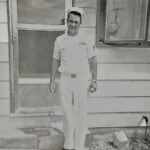 My husband, Bob Schulenberg’s uncle, Bernard Eugene “Butch” Hein was a well-known rancher is Forsyth, Montana. He was born June 28, 1945, in Miles City, Montana, to Walt and Vina Hein of Forsyth, Montana. Butch was the youngest of his mother’s five children (two of them, Marion and Walt Schulenberg) from a previous marriage. He also had a sister, Esther Hein and a brother, Eddie Hein. The family lived on a ranch outside of Forsyth. It was there that Butch first learned about ranching and knew that this would be his life’s work. While Butch would spend his childhood years helping on the ranch, there would be other life events that would have to take place before he finally settled into ranching. Butch graduated from Forsyth high school in 1964. The Vietnam war was in full swing, and Butch was drafted to the Navy in 1966. In all the years I have known Butch, he, like most other veterans never talked about his time during that war. I don’t know where he spent his service years, but I know that he was one of the men blessed to have made it home.
My husband, Bob Schulenberg’s uncle, Bernard Eugene “Butch” Hein was a well-known rancher is Forsyth, Montana. He was born June 28, 1945, in Miles City, Montana, to Walt and Vina Hein of Forsyth, Montana. Butch was the youngest of his mother’s five children (two of them, Marion and Walt Schulenberg) from a previous marriage. He also had a sister, Esther Hein and a brother, Eddie Hein. The family lived on a ranch outside of Forsyth. It was there that Butch first learned about ranching and knew that this would be his life’s work. While Butch would spend his childhood years helping on the ranch, there would be other life events that would have to take place before he finally settled into ranching. Butch graduated from Forsyth high school in 1964. The Vietnam war was in full swing, and Butch was drafted to the Navy in 1966. In all the years I have known Butch, he, like most other veterans never talked about his time during that war. I don’t know where he spent his service years, but I know that he was one of the men blessed to have made it home.
After returning home for his time in the service, Butch married Bonnie Wertz on April 13, 1968. Bonnie was the love of his life, and they began to build a life together. Their son, Scott Michael was born on November 5, 1969, and they were happy with their little family. Unfortunately, while they were preparing to expand their family, 
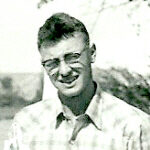 Bonnie was diagnosed with cancer. She delayed treatment in order to give their daughter a chance at life. Crista Dawn was born on October 26, 1973, but passed away on November 2, 1973. Bonnie continued to weaken and passed away on April 27, 1974. Butch was devastated. He felt like his life was over, but he had a son who needed him, so Butch pulled himself together, and raised his son as a single dad. Scott was his greatest achievement, and they were not only father and son, but later business partners and best friends. That friendship continued right up to Butch’s passing.
Bonnie was diagnosed with cancer. She delayed treatment in order to give their daughter a chance at life. Crista Dawn was born on October 26, 1973, but passed away on November 2, 1973. Bonnie continued to weaken and passed away on April 27, 1974. Butch was devastated. He felt like his life was over, but he had a son who needed him, so Butch pulled himself together, and raised his son as a single dad. Scott was his greatest achievement, and they were not only father and son, but later business partners and best friends. That friendship continued right up to Butch’s passing.
On October 13, 2023, a 78-year-old Butch, who was still very vibrant and full of life, got in his car and entered the interstate at his life-long hometown, Forsyth, Montana. Much of the rest is unknown at this time, but in the end, Butch was hit broadside by a semi-truck, and killed instantly. For his family, and all who knew him, this was a devastating loss. Butch was a friend to many, and certainly most of the town of Forsyth. He was also Grandpa to Scott’s three children with his wife Terri (née Wiederrick) Hein…Laura (Sean) Dailey, Carson Hein, and Lindsey Hein. Butch was so proud of his family, and one of the recent highlights of his life was being able to attend his granddaughter, Laura’s wedding on September 30, 2023. His grandchildren were his pride and joy. 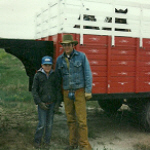
 Laura is a junior high school teacher in Chester, Montana; Carson works at the ranch with his dad and grandpa; and Lindsey is in college at Montana State University, having received a basketball scholarship. Butch was an amazing dad to Scott, and a blessing to Terri and the kids as well. His life’s work might have been ranching, but his family was his legacy. He will be forever loved and missed very much.
Laura is a junior high school teacher in Chester, Montana; Carson works at the ranch with his dad and grandpa; and Lindsey is in college at Montana State University, having received a basketball scholarship. Butch was an amazing dad to Scott, and a blessing to Terri and the kids as well. His life’s work might have been ranching, but his family was his legacy. He will be forever loved and missed very much.

 My little great grandson, Justin Petersen, who is the son of my grandson, Josh Petersen and his wife Athena Petersen, has had an eventful first year of life. When he was about a month old, Justin got the flu, which can be very scary for a baby. He spent some time in the hospital, and the doctors thought it might be tough and go, but with much prayer, he came out of it, and proceeded to flourish, and have great health. Nevertheless, that was a time none of us ever want to go through again.
My little great grandson, Justin Petersen, who is the son of my grandson, Josh Petersen and his wife Athena Petersen, has had an eventful first year of life. When he was about a month old, Justin got the flu, which can be very scary for a baby. He spent some time in the hospital, and the doctors thought it might be tough and go, but with much prayer, he came out of it, and proceeded to flourish, and have great health. Nevertheless, that was a time none of us ever want to go through again.
These days, Justin has a new job. He is a big brother. His baby brother, Axel was born 26 days before Justin turned 1 year old. That makes these brothers Irish Twins. Of course, they don’t know what that means yet, but they will eventually. Axel just knows that he’s tired, hungry, or wet. Justin just knows that there is a new baby at his house, and he really loves him. He doesn’t know it yet, but that new baby is going to 
 one of his best friends. Justin has a new built-in playmate. They will most likely fight over things like toys, space, and the last candy bar, among other things. Nevertheless, they will also learn that when it comes right down to it, brothers stick together. It will be a matter of knowing that “you might pick on your brother, but nobody else better do so.” That is sort of the sibling code. Siblings have to stick together!!
one of his best friends. Justin has a new built-in playmate. They will most likely fight over things like toys, space, and the last candy bar, among other things. Nevertheless, they will also learn that when it comes right down to it, brothers stick together. It will be a matter of knowing that “you might pick on your brother, but nobody else better do so.” That is sort of the sibling code. Siblings have to stick together!!
Justin was just beginning to take his early steps when his brother arrived, and now he is getting to be an old hand at it. I’m sure he realized that his mommy and daddy were going to have to be carrying his little brother around a lot, so he might have to walk on his own two feet. Not really, of course, because one-year-old-boys don’t think that way. Nevertheless, Justin knows that things have changed in his world, and he couldn’t be happier about it. Justin has always been a happy little boy, but he also has a “thinking” side to him too. I see it in him. He is a concentrator. I know it, 
 because I am a concentrator. We think things through, and sometimes people even think we are angry, because we tend to frown when we concentrate. Still, Justin has a goofy side too. He loves his toys and exploring new places. And Justin loves his Papa, my son-in-law, Kevin Petersen and Grandma, my daughter, Corrie Petersen. Still, his daddy is Justin’s fav!! Whenever he is at my house, and he finds out that his daddy is coming to pick him up, he stands at the door watching for him, and when he arrives…look out, because his daddy “hung the moon” and that’s a fact. Today is Justin’s first birthday. Happy birthday Justin!! Have a great day!! We love you!!
because I am a concentrator. We think things through, and sometimes people even think we are angry, because we tend to frown when we concentrate. Still, Justin has a goofy side too. He loves his toys and exploring new places. And Justin loves his Papa, my son-in-law, Kevin Petersen and Grandma, my daughter, Corrie Petersen. Still, his daddy is Justin’s fav!! Whenever he is at my house, and he finds out that his daddy is coming to pick him up, he stands at the door watching for him, and when he arrives…look out, because his daddy “hung the moon” and that’s a fact. Today is Justin’s first birthday. Happy birthday Justin!! Have a great day!! We love you!!

